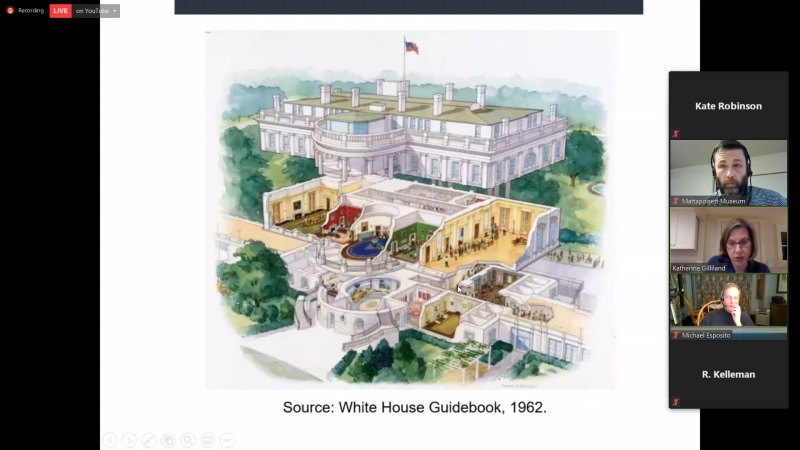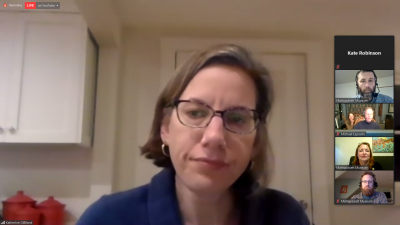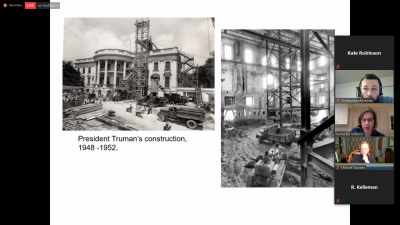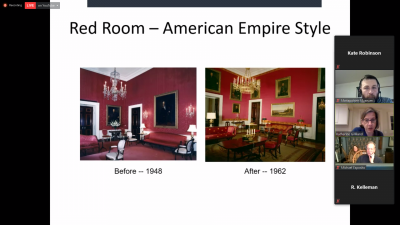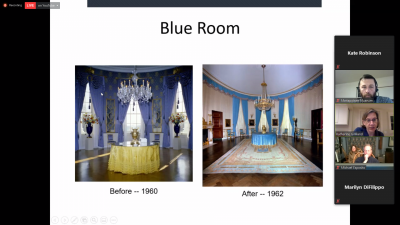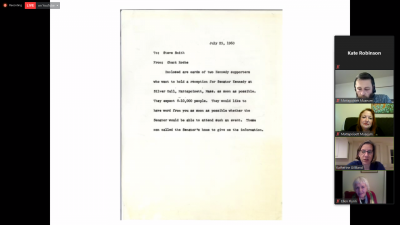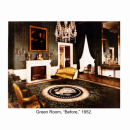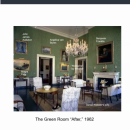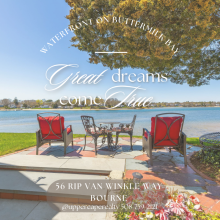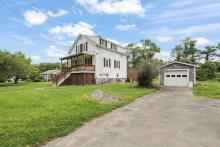Renovator-in-Chief: Museum hosts talk on Kennedy’s White House project
Everyone loves a good makeover — especially if it involves an iconic building.
Nearly 60 residents and friends showed up to a virtual talk from the Mattapoisett Museum on Jan. 14 about Jacqueline Kennedy’s renovation of the White House during her tenure as First Lady.
The talk — hosted via Zoom — was led by Kennedy Library Docent Manager Katherine Gilliland and started off with a point of local interest from the library’s archives: a typed memo from JFK’s presidential campaign in July 1960 asking if the then-senator could attend a reception of 8-10,000 people at the Silver Gull in Mattapoisett.
Two attendees, the former inn’s current owners Michael Esposito and Cynthia Redel, took a particular interest.
“I own the building that used to be the Silver Gull,” Esposito said. “Can I get a copy of this?”
Later, when another guest asked if the event ever took place, Gilliland laughed. “I had that same question myself,” she said. “I was in suspense!”
Unfortunately, she said, she hasn’t found out anything more about it — but there are plenty more documents left to digitize.
“I’ll see if I can figure it out,” she promised. “I’ll go on a history hunt.”
During the talk Gilliland outlined previous work done on the White House and how the First Lady turned the historic home into a live-in museum with its own permanent collection.
Historical anecdotes abounded.
When describing why President Truman needed to gut the interior and put in steel beams in 1949, she illustrated just how dangerous the building had become.
“Some said it was only staying up out of force of habit,” she said. “Margaret Truman, President Truman’s daughter, was playing the piano when the leg of her stool went through the floor — that’s how structurally unsound the building was.”
Truman later decided to move his family to a house across the street for most of his presidency.
She also described how “disappointed” Kennedy was in the house on a childhood visit, without even a souvenir booklet to buy.
“She thought that the tour of the FBI building in D.C. was the highlight of her trip, not the house,” Gilliland noted.
So after Kennedy became the First Lady, said Gilliland, her first goal was to restore the house to its former glory — a project she described as a “question of scholarship.”
Almost immediately, she began seeking funding and looking for historical objects worthy of the house, striking a delicate balance between aesthetics and historical accuracy.
She sought American-made items that belonged to former presidents or were of the right era.
Eventually, she and her team gathered so many items — including unsolicited donations from all over the country — the curator’s office looked “not unlike antiques roadshow,” according to Gilliland.
“Chairs, old washstands, rugs, quilts, a spittoon that supposedly belonged to Andrew Jackson — and it turned out it did — three basement storerooms were [set aside] to process all the items,” she noted. “Over 95% of all donated items had to be returned.”
But the results impressed the nation.
Gilliland showed clips from a video tour given in 1962 by the lady herself as well as “before” and “after” photos of iconic spaces like the Red Room and the Green Room, describing how Kennedy was able to brighten them up and create separate styles for each.
The new Red Room, for example, contained American-style Empire furniture.
The style was brought to this country from France by Napoleon Bonaparte’s brother Joseph, a New Jersey resident and former King of Naples and Spain.
Following the project’s success, Kennedy went on to other great preservation projects, helping save D.C.’s historic Lafayette Square and Grand Central Station in New York from being torn down.
“That was fascinating,” said Mattapoisett Museum President Kyle DeCicco-Carey after the lecture, as the chat filled up with questions and messages of thanks from those watching.
Museum director Dr. Jeffrey Miller noted how challenging it must be to curate a home and workspace.
“They're trying to curate these rooms that people are using for receptions all the time, and leaving glasses around, and everything,” he said. “That’s crazy. I don’t know how they do it!”



